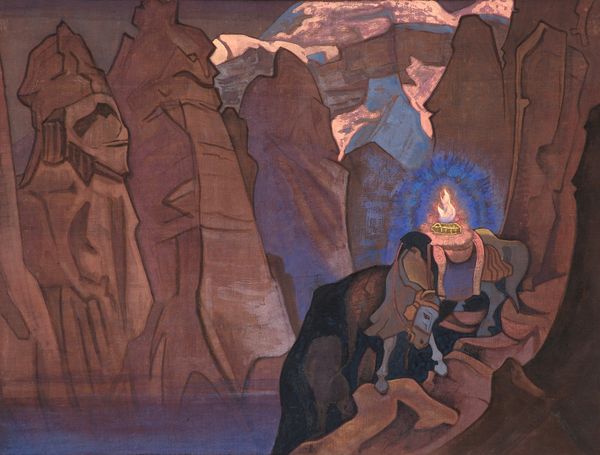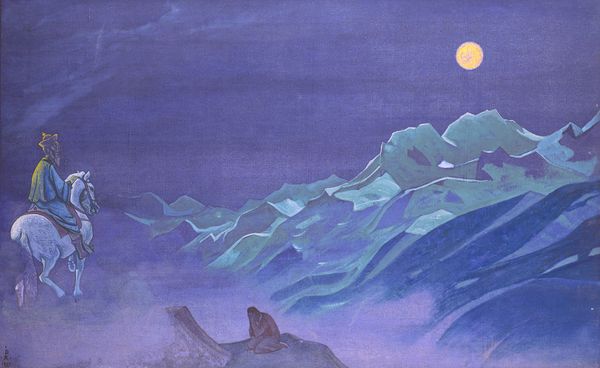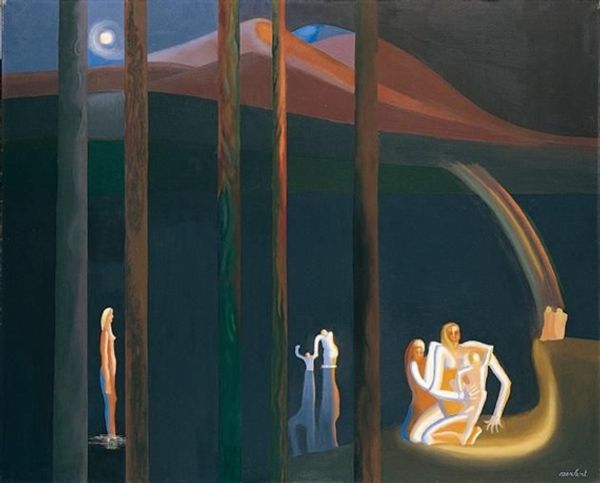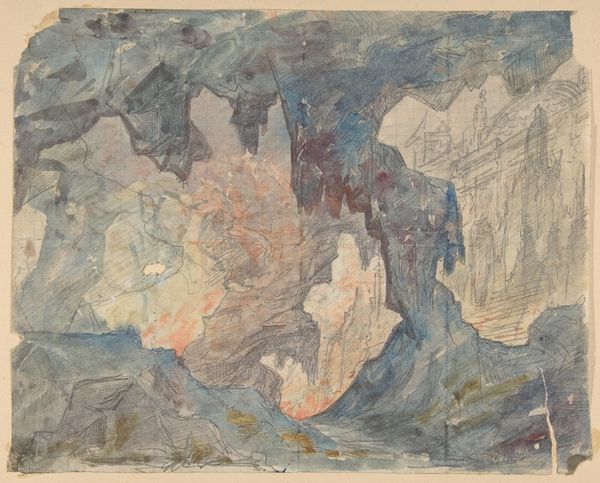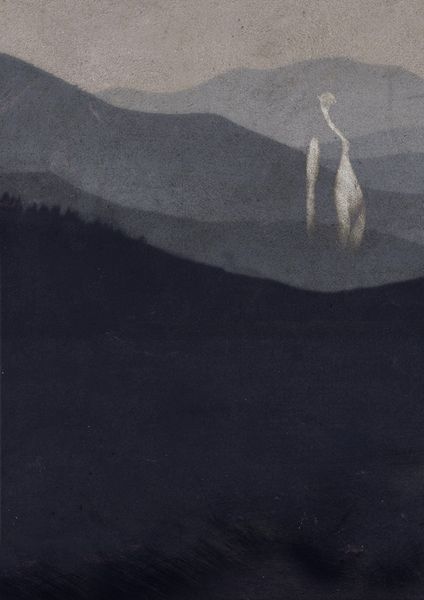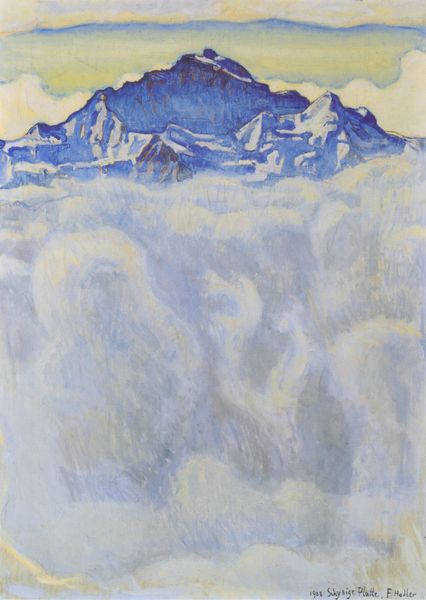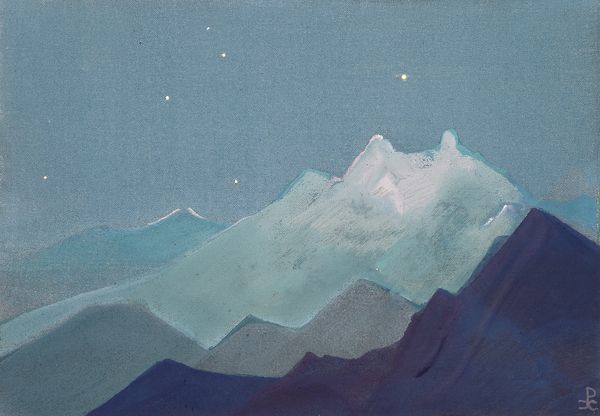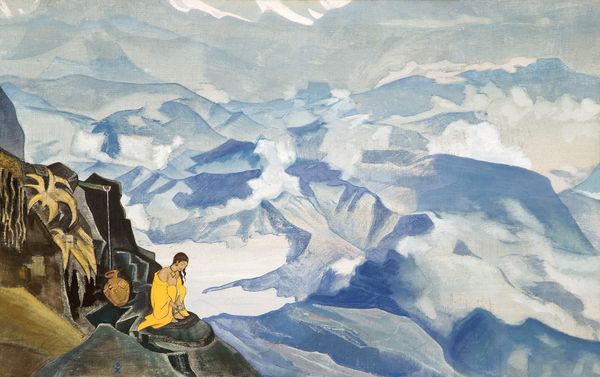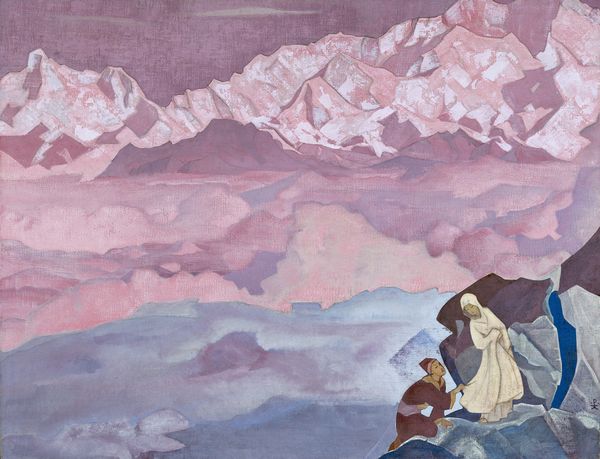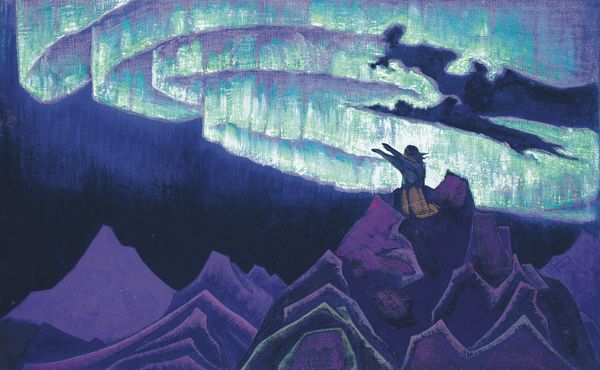
Dimensions: 88.3 x 116.8 cm
Copyright: Public domain
Editor: We’re looking at Nicholas Roerich’s "Burning the Darkness" from 1924. It's a tempera painting depicting a mountain scene at night with figures in white robes. There's this strange, almost ethereal glow to it. What's your take on how Roerich uses the materials here to convey this specific mood? Curator: Consider tempera, a fast-drying medium. What did that materiality and that working speed allow Roerich to achieve here in terms of production? And what is the social implication of creating works on paper versus stretched canvas in this era, do you think? Editor: Well, tempera allowed for layering, creating that luminosity, maybe he could do multiple layers quickly and that way created volume. But making it on paper seems…almost like this wasn't intended to be "serious" art, even though the allegorical content feels weighty. Was it meant for mass consumption? Curator: Precisely. Think about the market forces at play. Roerich, while exploring spiritual themes, was also very aware of making his art accessible. Using tempera on paper allowed for quicker production, potential reproduction, and a broader audience. It challenges this divide between “high art” displayed at the museums and affordable, more readily available forms. This brings questions to who consumes this art, how and why? Editor: That makes sense. So the material choice isn't just about aesthetics; it's intrinsically tied to the art market and social accessibility? Did this affect his legacy at all, or was it more about his esoteric spiritual themes? Curator: It's both! The means of production impacted the reach of his symbolic language and spiritual concepts, making it widely accessible for both private and public consumption. This definitely added value to his vision about what art could do in society. Editor: It’s really interesting how understanding the material informs our understanding of the social context. Curator: Indeed! Examining the "how" and "why" of its making reveals so much more about its purpose.
Comments
No comments
Be the first to comment and join the conversation on the ultimate creative platform.

